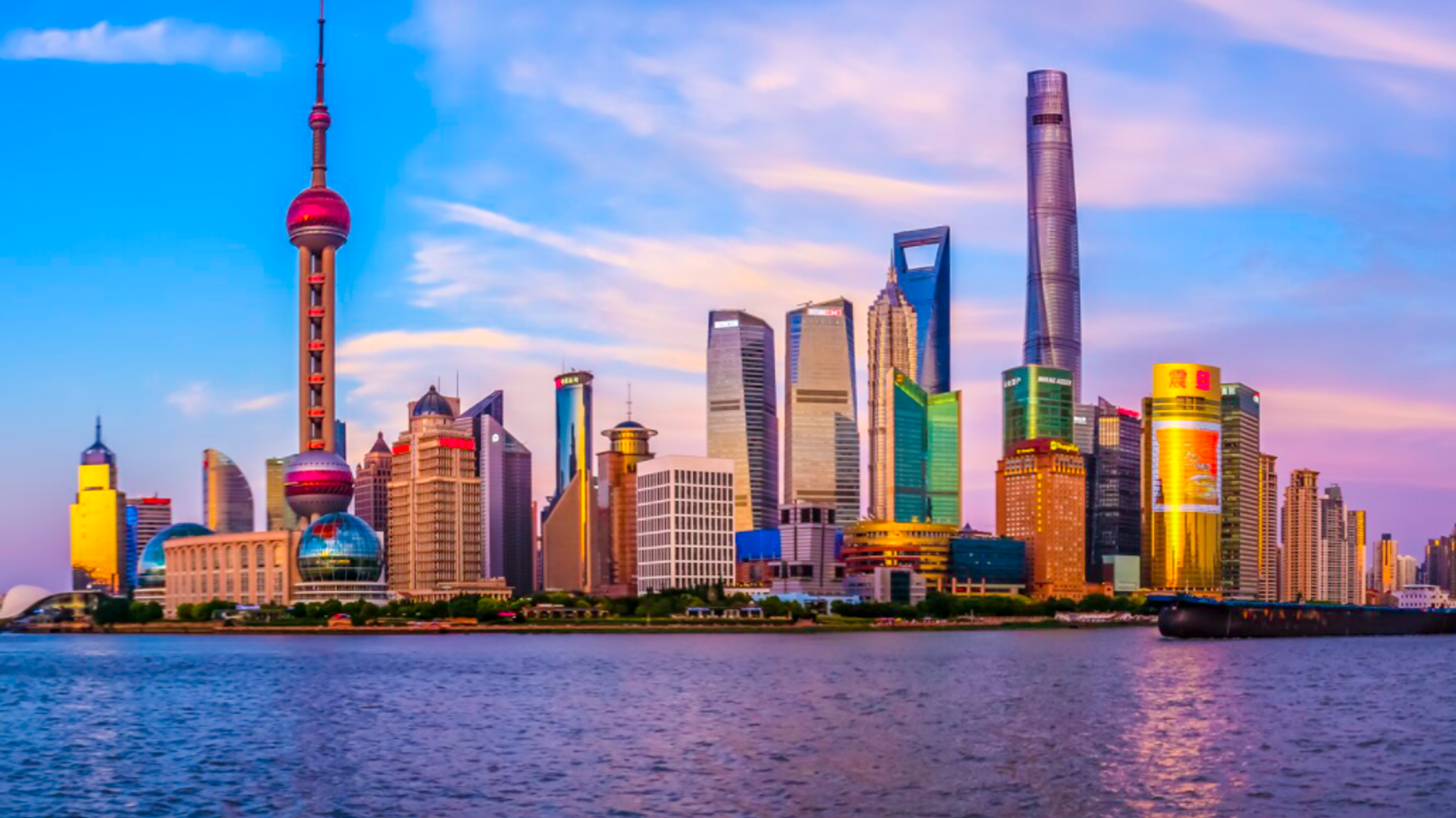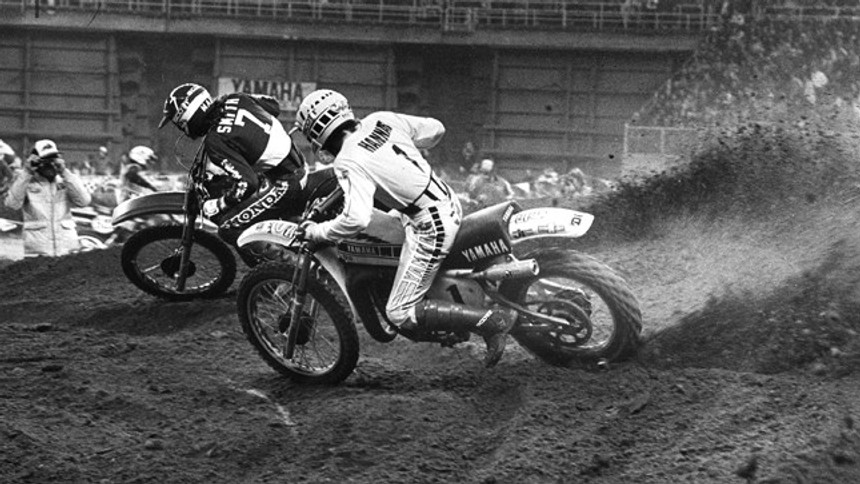MXGP 2025 - The Cities History
Something that is often lost to the World motocross championships is the amazing history of the countries and cities we visit and while MXGP.tv try and capture as much as possible from the places we visit, it isn’t easy putting all the history of the places into a 20-minute YouTube video.
For me, coming from Australia, I clearly remember my first trip to Europe and being blown away with some of the old cities I visited and obviously coming from a country that wasn’t colonized until 1778 (although our indigenous people lived there for around 60,000 years), parts of Europe, like San Marino has a founding date of September 3, 301 AD.
For an Aussie in Europe, it is easier to enjoy the cultures, because still, it blows my mind every time I visit somewhere beautiful like Paris, Venice, Rome, London or Amsterdam, while Europeans generally grew up with these cultures and history.
Below is a Wikipedia and other sources information on the cities we visit in 2025 and for sure, its going to be a cracking season. Who takes the MXGP title between Tim Gajser, Jeffrey Herlings, Romain Febvre or Lucas Coenen and the MX2 title might be a little easier now for Kay De Wolf, but in motocross, you just never know what to expect.
Round One – Cordoba, Argentina
Córdoba is a city in central Argentina, in the foothills of the Sierras Chicas on the Suquía River, about 700 km (435 mi) northwest of Buenos Aires. It is the capital of Córdoba Province and the second-most populous city in Argentina after Buenos Aires, with about 1.6 million urban inhabitants according to the 2020 census.
Córdoba was founded as a settlement on 6 July 1573 by Spanish conquistador Jerónimo Luis de Cabrera, who named it after the Spanish city of Córdoba. It was one of the early Spanish colonial capitals of the region of present-day Argentina (the oldest Argentine city is Santiago del Estero, founded in 1553). The National University of Córdoba, the oldest university of the country, was founded in 1613 by the Jesuit Order, and Córdoba has earned the nickname La Docta ("the learned").
Round Two – Cozar, Spain
Maybe a little more underwhelming, round two at Cozar in Spain, but Cozar is a charming city in Spain, known for its rich history and beautiful landscapes. Visitors can explore historical sites, enjoy local cuisine, and participate in vibrant festivals. The city is also in a wine region, offering excellent local wines. However, the language barrier, hot summers, limited nightlife, and accommodation options may pose challenges for some travellers.
Round Three – St Jean d’Angely, France
The town of Saint Jean d’Angely has had a long and brutal history. The Abbey is the main feature of the town. It was founded in the ninth century to house a relic of Saint John the Baptist, and rebuilt in the 14th, 17th and 18th centuries because of repeated destruction. The Abbey was then abandoned and is now a listed building.
Saint Jean d’Angely is situated on the pilgrim route that led to Santiago de Compostela] the edifice still constitutes a major stopping-off point for pilgrims. Since 1989, the Royal Abbey has housed the Centre of European Culture, which has breathed new life into the Abbey by restoring it as a historical and cultural site and as a place for the exchange of ideas.
Round Four – Riola Sardo, Sardinia
Similar to Cozar, Riola Sardo doesn’t have the history of some of the other stops in the MXGP calendar, but still, Arriora or Arriola in the Sardinian language, is a comune (municipality) in the Province of Oristano in the Italian region Sardinia, located about 100 kilometres (62 mi) northwest of Cagliari and about 11 kilometres (7 mi) north of Oristano. As of 31 December 2004, it had a population of 2,132 and an area of 48.2 square kilometres (18.6 sq mi).
Round Five – Trentino, Italy
The History of Trentino begins in the mid-Stone Age and continues to the present day when Trentino is part of the Italian Republic. During the Stone age the valleys of what is now Trentino were already inhabited by humans, the main settlements being in the valley of the Adige River, thanks to its milder climate. Research suggests that the first settlers (probably hunters) came from the Padana Plain and the Venetian Prealps, after the first glaciers began melting at the end of the Pleistocene glaciations.
Around 500 BC, the Raetians appeared in the Trentine area, coming from the Central and Eastern Alps area. They settled in several valleys and brought new skills on top of the traditional hunting: agriculture (grapes, vegetables, cereals), breeding (ovines, goats, bovines and horses). During the Roman Age, part of the current Trentino-Alto Adige/Südtirol region made up the province of Raetia. This region was totally conquered by the Romans in the 1st century BC. The definitive defeat of the Rhaetians, near Bolzano, occurred during the military campaigns in the Alps of Drusus and Tiberius (16-17 BC). Trento became a Roman municipium in the 40s BC.
Round Six – Frauenfeld, Switzerland
Frauenfeld is the capital of the canton of Thurgau in Switzerland. The official language of Frauenfeld is (the Swiss variety of Standard) German, but the main spoken language is the local variant of the Alemannic Swiss German dialect. Document signed by Arnulf of Carinthia, dated 888 but possibly from the 11th or 12th century, granting the manor farm of Erchingen to Reichenau Abbey
The earliest traces of human settlement are several La Tène era graves to the east of Langdorf. The Roman Road from Oberwinterthur (Vitudurum) to Pfyn ran through what is now the Allmend in Frauenfeld. Two Roman villas were discovered in Thalbach and Oberkirch. The villa seems to have become the focal point of the later settlement of Oberkirch. On the ruins of the villa, an Early Middle Ages cemetery was built, and by the 9th century, the Oberkirch church was built.
Perhaps as a result of royal donation in the 9th century, or more likely a donation in the 13th century, the area around Frauenfeld belonged to the Dinghof (a church- or monastery-owned manor farm) of Erching. Erching had a manor house, twelve houses, at least one mill, and probably also a church in Oberkirch. In the 13th century, Erching formed a self-contained manor farm complex and was occupied by a Habsburg Vogt after 1270. Starting in the late 12th century, a village grew up in the area around Erching and another grew up around the church at Oberkirch.
By the end of the 1220s, a fortified tower with a mill and chapel was built and a third village began to grow up around the castle. This village, which would become Frauenfeld, grew gradually on land owned by Reichenau Abbey. The original fortified tower grew into Frauenfeld Castle.
Round Seven and Eight – TBA
Round Nine – Ernee, France
Amazingly, when you go to Wikipedia for information on Ernee, the Monster Energy Motocross of Nations is one of the highlights, thus, not a lot of history in terms of culture, but motocross is really ingrained into this area.
Ernée is a commune in the Mayenne department in north-western France. It is named after the river Ernée, which runs through the town and is situated about halfway between the towns of Laval and Fougères. Ernée is home to a purpose-built motocross track, which has been used in the Motocross World Championships and Motocross des Nations.
Round Ten – Teutschenthal, Germany
Teutschenthal is a town located in the Saxony-Anhalt region of Germany. This place is known for its rich history and cultural heritage. It is situated in the heart of Germany and offers a unique blend of traditional and modern lifestyle. The region of Saxony-Anhalt is known for its beautiful landscapes and historical sites, making Teutschenthal a must-visit place for tourists.
Round 11 – Kegums, Latvia
Like Ernee, Ķegums is also known as a motocross area, a town in Ogre Municipality situated mostly on the right bank of the Daugava River. Latvian law defines Ķegums town as divided between two regions, Vidzeme on the right bank of the Daugava and Semigallia on the left bank.
The construction of the town was started in 1936 as a settlement to house the workers constructing the Ķegums Hydroelectric Power Station. Ķegums was granted town status in 1991. Ķegums has been host to the Latvian Grand Prix of Motocross World Championship and Sidecarcross World Championship numerous times.
Round 12 – Sumbawa, Indonesia
Because of Sumbawa's natural resources, it was regularly invaded by outside forces – from the Javanese, Balinese, and Makassar to the Dutch and Japanese. The Dutch first arrived in 1605 but did not effectively rule Sumbawa until the early 20th century. For a short period, the Balinese kingdom of Gelgel ruled a part of western Sumbawa. The eastern parts of the island were traditionally divided into four sultanates: Sumbawa, Sanggau, Dompo, and Bima, which had links to the Bugis and Makassar peoples of South Sulawesi.
Historical evidence indicates that people on Sumbawa Island were known in the East Indies for their honey, horses, sappanwood, which is used to make red dye, and sandalwood, which is used for incense and medications. The area was thought to be highly productive agriculturally. In the 18th century, the Dutch introduced coffee plantations on the western slopes of Mount Tambora, a volcano on the north side of Sumbawa, thus creating the Tambora coffee variant.
Round 13 – Lombok, Indonesia
Lombok is an island in West Nusa Tenggara province, Indonesia. It forms part of the chain of the Lesser Sunda Islands, with the Lombok Strait separating it from Bali to the west and the Alas Strait between it and Sumbawa to the east. It is roughly circular, with a "tail" (Sekotong Peninsula) to the southwest, about 70 kilometres (43 miles) across and a total area of about 4,607.38 square kilometres (1,778.92 square miles) including smaller offshore islands. The provincial capital and largest city on the island is Mataram.
Lombok is somewhat similar in size and density and shares some cultural heritage with the neighbouring island of Bali to the west. However, it is administratively part of West Nusa Tenggara, along with the larger and more sparsely populated island of Sumbawa to the east. Lombok is surrounded by a number of smaller islands locally called Gili.
Round 14 – Loket, Czech Republic
In the second half of the 12th century, a royal castle Loket was built on a landmark promontory within the Ohře River bend. It used to be called the "Key to the Kingdom of Bohemia". Soon after, a small town, first mentioned in 1234, arose below the castle. In the early 15th century, the royal town was fortified and turned into an important focal point of the Bohemian Crown. In the course of the 19th century, the town became famous for its local porcelain factory. However, industrial production was located in the surrounding towns.
From 1938 to 1945, Loket was occupied by Nazi Germany and administered as part of the Reichsgau Sudetenland. In 1945, the German population was expelled according to the Beneš decrees. In the late 20th century, the castle underwent a complete reconstruction and was subsequently open to the public.
Round 15 – Lommel, Belgium
No, if you go to history of Lommel, you don’t find the 1981 MXdN (was actually the Trophee des Nations in Lommel in 1981) as part of its history, but for sure, for us motocross fans, Lommel is all about 1981 and 2012, two very famous motocross events.
Lommel is a municipality and a city in the Belgian province of Limburg. The Kempen city has about 34,000 inhabitants and is part of the electoral district and the judicial district Lommel Neerpelt. Besides residential town of Lommel also has a number of nature reserves, such as the nature reserve De Watering, the Lommel Sahara, and numerous forests and heathlands. Lommel is the third shopping city in Belgian Limburg with a commercial and shopping center De Singel. Importantly, the silver sand that is mined here for the benefit of the glass industry. Some sand mining quarries are transformed into nature reserves and recreational areas, including Lommel Sahara. The city of Lommel is the watershed of the basins of the Scheldt, and Meuse, and within these basins Nete Dommel respectively.
Round 16 – Uddevalla, Sweden
Uddevalla received its town privileges in 1498, but thought to have been a place of trade long before that. Formerly, Uddevalla belonged to Norway, and its name today comes from the original Norwegian Oddevald, which later turned into Oddevold. Due to its close location to Sweden and Denmark, it was often besieged. In 1612, it was burnt down by Swedish troops led by Jesper Mattson Krus and in 1644, it was once again burnt down, this time by Swedish commander Harald Stake.
In 1658, it was ceded to Sweden at the treaty of Roskilde. The Norwegians recaptured the town a year later, and in 1660, it was once again ceded to Sweden at the peace treaty of Copenhagen. Later, Norway annexed Uddevalla and the nearby fortress on the Galleberg repeatedly, the last time in 1788. In the 18th and 19th century, Uddevalla's main source of income was herring fishing. The town was also noted for the great fires that damaged the city on several occasions. The most devastating fire was in 1806, when the whole town burned to the ground. Only four houses were left untouched and 4,000 people became homeless.
During the 19th century, Uddevalla had trouble getting out of its own recession; poverty and alcoholism were widespread among the population. The reasons were mainly the aftermath of the fire in 1806, the decrease in herring fishing and the opening of the Trollhätte Canal.
Round 17 – Arnhem, The Netherlands
The oldest archeological findings of human activity around Arnhem are two firestones of about 70,000 years ago. These come from the Stone Age, when the Neanderthals lived in this part of Europe. In Schuytgraaf, remnants of a hunter’s camp from around 5000 BC have been discovered. In Schaarsbergen, twelve grave mounds were found from 2400 BC, which brought the so-called Neolithic Revolution to the area of Arnhem, which meant the rise of the farmers.
During the German occupation (World War II), the occupiers operated a subcamp of the Herzogenbusch concentration camp in the city. During Operation Market Garden (September 1944), the British 1st Airborne Division, under the command of Major-General Roy Urquhart, and the Polish 1st Independent Parachute Brigade were given the task of securing the bridge at Arnhem. The British force at the bridge eventually ran out of ammunition and was captured on 21 September, and a full withdrawal of the remaining forces was made on 26 September. These events were dramatized in the 1977 movie A Bridge Too Far.
Round 18 – Afyonkarahisar, Turkey
The top of the rock in Afyon has been fortified for a long time. Akroinοn became an important fortress in the Armeniakon theme due to its strategic location and natural defences and was first mentioned in Byzantine history when it was attacked in 716 and 732 by Arabs invaders. The Byzantine emperor Leo III renamed the city Nicopolis (Greek for "city of victory") after his victory over Arab besiegers under Abdallah al-Battal (who would become the famous Turkish literature figure of Battal Gazi) in 740. Since the 10th century it was also a bishopric of Phrygia Salutaris.
After 1071 the town became part of the frontier zone between the Byzantine Empire and the invading Turks. The city was still held by the former in 1112 but was lost to the Sultanate of Rum at some time before 1146 when Manuel I Komnenos won a victory here. The Turks were unable to firmly control the city until around 1210, renaming it to Kara Hissar ("black castle") after the ancient fortress situated upon a volcanic rock 201 meters above the town. Following the dispersal of the Seljuqs the town was occupied by the Sâhib Ata and then the Germiyanids. The castle was finally conquered by the Ottoman Sultan Beyazid I in 1392 but was lost after the invasion of Timur Lenk in 1402. It was recaptured in 1428 or 1429.
Round 19 – Shanghai, China
The history of Shanghai spans over a thousand years and closely parallels the development of modern China. Originally a small agricultural village, Shanghai developed during the late Qing dynasty (1644–1912) as one of China's principal trading ports. Although nominally part of China, in practice foreign diplomats controlled the city under the policy of extraterritoriality. Since the economic reforms of the early 1990s the city has burgeoned to become one of Asia's major financial centers and the world's busiest container port.
Around 6000 BCE, only the western part of the Shanghai region encompassing today's Qingpu, Songjiang and Jinshan districts were dry land formed by lacustrine silting from ancient Lake Tai. The modern Jiading, Minhang and Fengxian districts emerged around 1,000 BC while the downtown area remained underwater.
Round 20 – Darwin, Australia
The Aboriginal people of the Larrakia language group are the traditional custodians and earliest known inhabitants of the greater Darwin area. Their name for the area is Garramilla, pronounced /ɡɑːrəmɪlə/ and meaning "white stone", referring to the colour of rock and sea cliffs found in the area. They had trading routes with Southeast Asia and imported goods from as far afield as South and Western Australia. Established songlines penetrated throughout the country, allowing stories and histories to be told and retold along the routes. The extent of shared songlines and history of multiple clan groups within this area is contestable.
Darwin is the capital city of the Northern Territory, Australia. The city has nearly 53% of the Northern Territory's population, with 139,902 at the 2021 census. It is the smallest, wettest, and most northerly of the Australian capital cities and serves as the Top End's regional centre.







